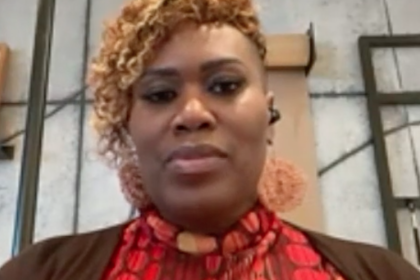John Pasmore, a veteran of the media and technology industries, is on a mission to democratize artificial intelligence (AI). With his latest brainchild, Latimer.ai, he aims to provide a powerful AI tool that not only embraces Black history and culture but also empowers users to leverage its capabilities for creation and production.
In a recent conversation, Pasmore shared his insights on the current state of AI, the importance of responsible development, and the vast potential this technology holds for the future.
Building bridges, not walls
Pasmore’s journey into AI began with a realization: the data used to train most AI models lacked diversity. This could lead to biased outputs that perpetuate historical inequalities. Latimer.ai was born out of this concern. It boasts a unique database that incorporates Black historical documents and cultural touchstones, ensuring a more comprehensive and representative understanding of the world.
“We have an exclusive relationship with the New York Amsterdam News,” Pasmore explains. “Their data goes back to 1926. These are stories that we want to have in our AI.” This curated approach ensures that AI doesn’t become a tool for cultural appropriation but rather a bridge for understanding and celebrating Black voices.
While Pasmore is enthusiastic about the potential of AI for creative endeavors, he acknowledges the challenges that come with its rapid development. Job displacement is a major concern, and Pasmore highlights the work of Sam Altman, CEO of OpenAI, who is exploring solutions like universal basic income through his company Worldcoin.
“We need to pay attention,” Pasmore urges. “There’s an opportunity to be creators and producers, but we just have to kind of pay attention as well.”
The democratization of AI
Latimer.ai stands out for its accessibility. Pasmore emphasizes that unlike some complex AI models, Latimer.ai is user-friendly and doesn’t require extensive technical knowledge. It’s a tool designed for everyone, not just tech wizards.
“You can upload a file or a document,” Pasmore explains. “So, hey, I’m not going to read these 20 pages, I’m going to upload it to Latimer.ai, I’m going to ask it for a summary.”
This ease of use makes AI a valuable asset for students, researchers, and anyone looking to boost their productivity and creativity.
The conversation with Pasmore leaves a sense of optimism about the future of AI. By prioritizing cultural inclusivity, responsible development, and user-friendliness, AI has the potential to become a powerful tool for progress and positive change. As Pasmore himself says, “It’s an opportunity to be creators and producers.” The future lies in embracing AI and using it to shape a world that is more informed, equitable, and brimming with creative potential.














